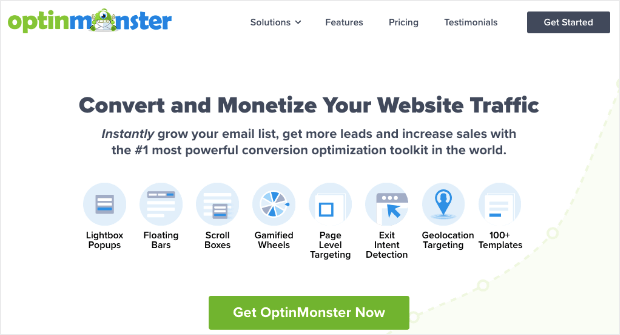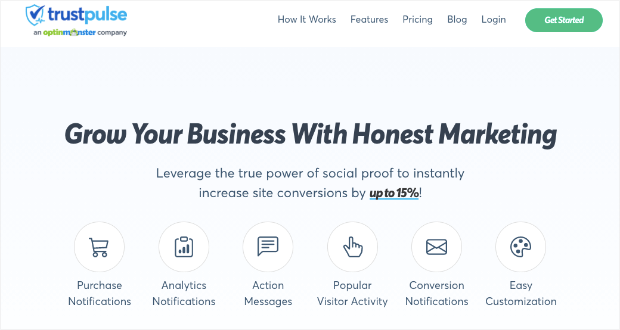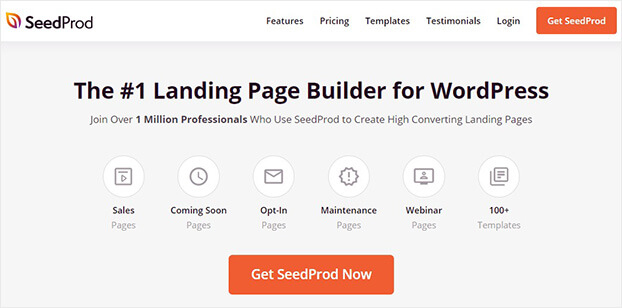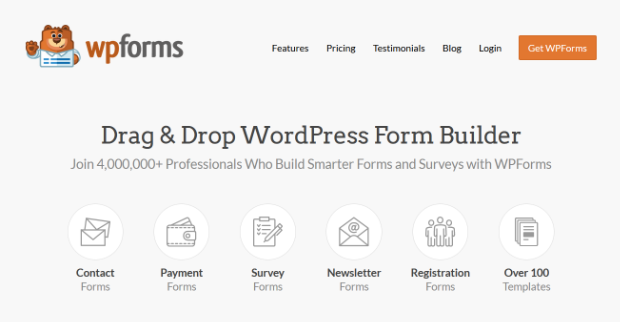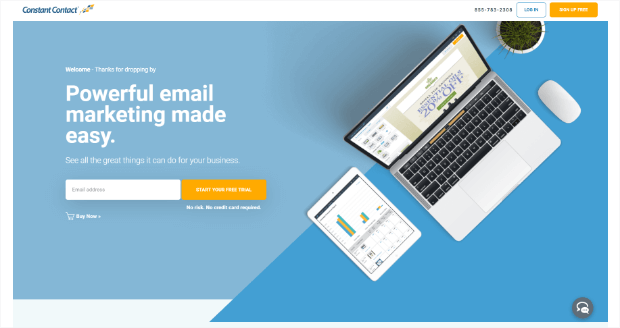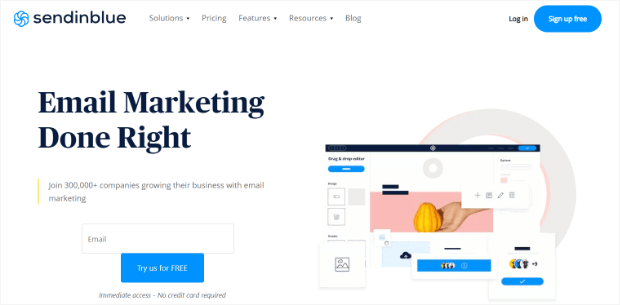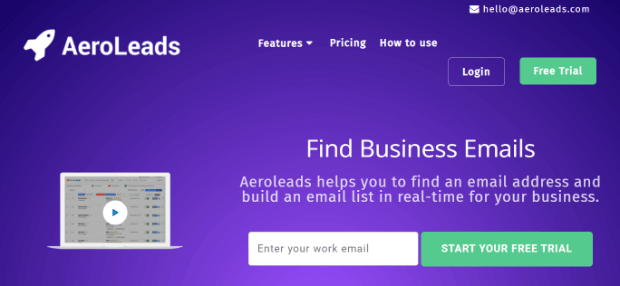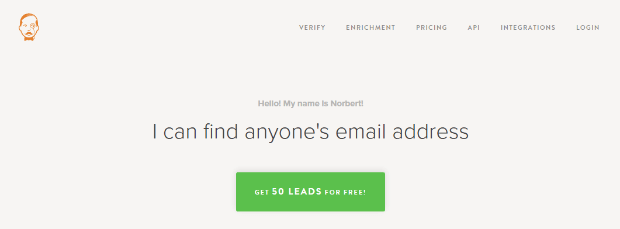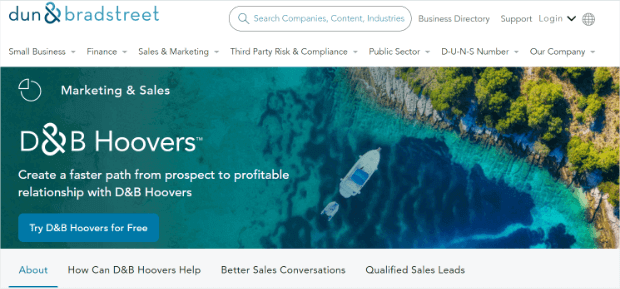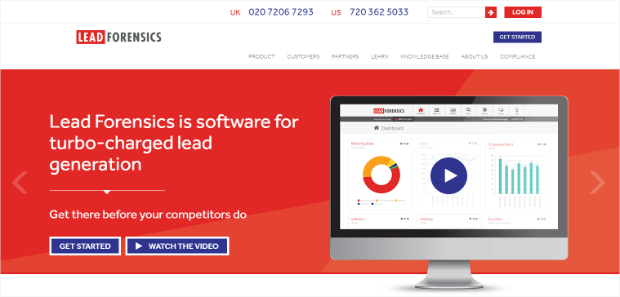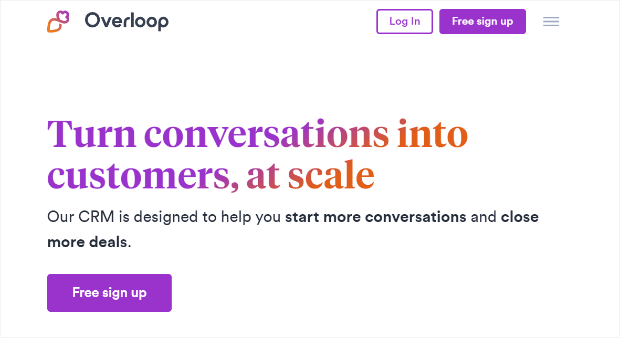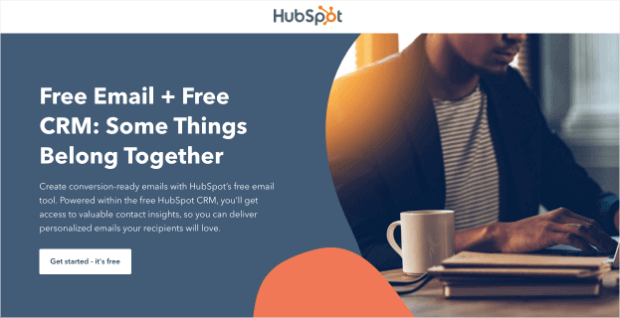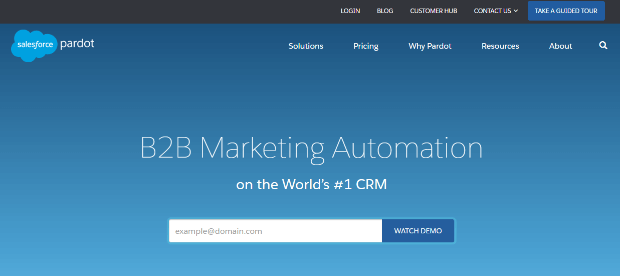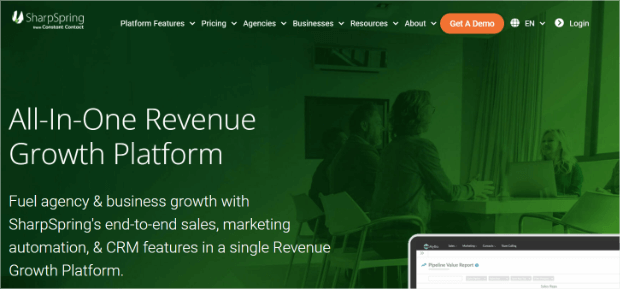How to Develop Effective Lead Generation Strategies
- December 20, 2022
- Digital Marketing, Inbound Sales, Lead Generation, Outbound Sales, Sales
Need assistance with Lead Generation? You have come to the right place!
The Serial Seller was started to assist business owners with creating and driving more leads into B2B businesses.
There are a lot of very smart and talented people that run businesses and I am sure if you’re reading this, you are one of them.
Do you have skills in a certain area? Such as an IT Technician? And… you’ve now started a business with a couple of clients but you need more clients to grow your business as you have become stagnant?
Lets walk you through Lead Generation
Lead generation is more than just getting people to visit your site. It’s also about collecting their information so you can drive communication and turn casual traffic into loyal customers.
And just like any tough job, lead generation requires the right tools, even for professional marketers.
What is B2B lead generation?
B2B lead generation is short for business-to-business lead generation, which describes businesses that primarily sell to (*drumroll please*) other businesses.
The journey of a thousand miles begins with a single step. And in a typical marketing strategy, marketing funnel or sales process, B2B lead generation is that step.
Lead gen involves collecting a potential customer’s information — such as name, email, company name, and job title — and using that information to target them with customized sales pitches or ad campaigns.
B2B is different from business-to-consumer (B2C) lead generation, where products and services are sold directly to consumers.
B2C and B2B businesses also find leads in different places — which means if you’re trying to find potential customers with the same strategies as a B2C e company, you’re going to fail.
According to Hubspot, the three best lead sources for B2B companies are SEO (14%), email marketing (13%), and social media (12%).
B2C, on the other hand, gets more leads from traditional advertising, social media, and email.
It’s not just where leads come from — the nurturing process between B2B and B2C is also quite different, which is why marketers have to start on the right foot.
The B2B lead generation process
Learning how to get B2B sales leads is just one part of the process.
If you’re serious about increasing sales, you’ll need an intense lead generation process. Processes align marketing and sales teams and give reps a proven framework to follow.
We know that B2B lead generation describes the process used by salespeople and marketing teams to turn prospects into paying customers. But what do these steps entail?

Step 1: Find B2B sales leads
The first step in most B2B lead generation strategies is finding the contact information of potential buyers.
Contact information is often sourced in-house, generated by a third-party “lead gen” company, or bought from a lead database (not advisable for B2B lead generation).
Step 2: Reaching out to leads
With a list of (hopefully) high-quality leads, reps reach out to leads through cold outreach, social media, or by replying to inquiries.
Step 3: Qualifying & prospecting high-quality leads
While interacting with leads, reps measure how likely leads are to buy.
They’ll do this by gauging the stage leads are at during the buying process. These stages include:

1. Research & awareness: The prospective customer is aware of a solution they need or problem they face, and they begin to learn more about it.
The awareness stage is where they’ll consume content like blogs, whitepapers, and case studies.
2. Consideration: The lead knows the exact service/product that’s needed. They’ll detail their specific needs before researching and “opening up” to vendors.
3. Decision: Filtering through vendors that best suit their needs, the buyer will have multiple meetings and check-in with other decision-makers to complete a purchase.
Depending on what stage a lead is at, reps will initiate nurturing campaigns or focus on getting the prospect to book a call or demo.
Step 4: Close leads by making a sale
Success! After multiple meetings with different vendors, the prospect picks you, and the deal is done. They’ll now be transferred to customer success for onboarding. Woot!
24 Strategies for Generating B2B Leads
In this section, we’ll cover the four strategies outlined above, as well as a strategy that hasn’t been mentioned in any of the studies, yet it enabled one B2B company to generate a 5,100% ROI from a $1 million investment.
First though, it’s important to make sure that whichever strategy you choose, you have a well-tuned funnel that isn’t going to leak valuable leads.
Hit your marketing goals.
Avoiding the leaky bucket effect
Many B2B marketers spend a lot of time, metaphorically, pouring water into leaky buckets. Rather than fixing the bucket (the marketing funnel), they pour more water (traffic) into the bucket to keep it full.
This is a recipe for inflated acquisition costs and below-average results.
The biggest culprit here is landing pages and, in particular, your forms. Forms separate your leads from non-leads, and have a huge impact on your conversion rates and overall lead generation results. If you haven’t already, I’d recommend optimising your forms – or using a tool like Leadformly to ensure that you’re not leaving leads behind from your marketing campaigns.
Let’s say you send 1,000 visits to your landing page at a cost of $3 per visit. If your form converts at 1% you’ll get 10 leads at a cost per lead of $300. If, on the other hand, your form converted at 3%, you’d receive 30 leads at a cost per lead of $100.
That’s 3X more leads for one third of the cost per leads without spending a penny extra – just by improving your lead generation form.
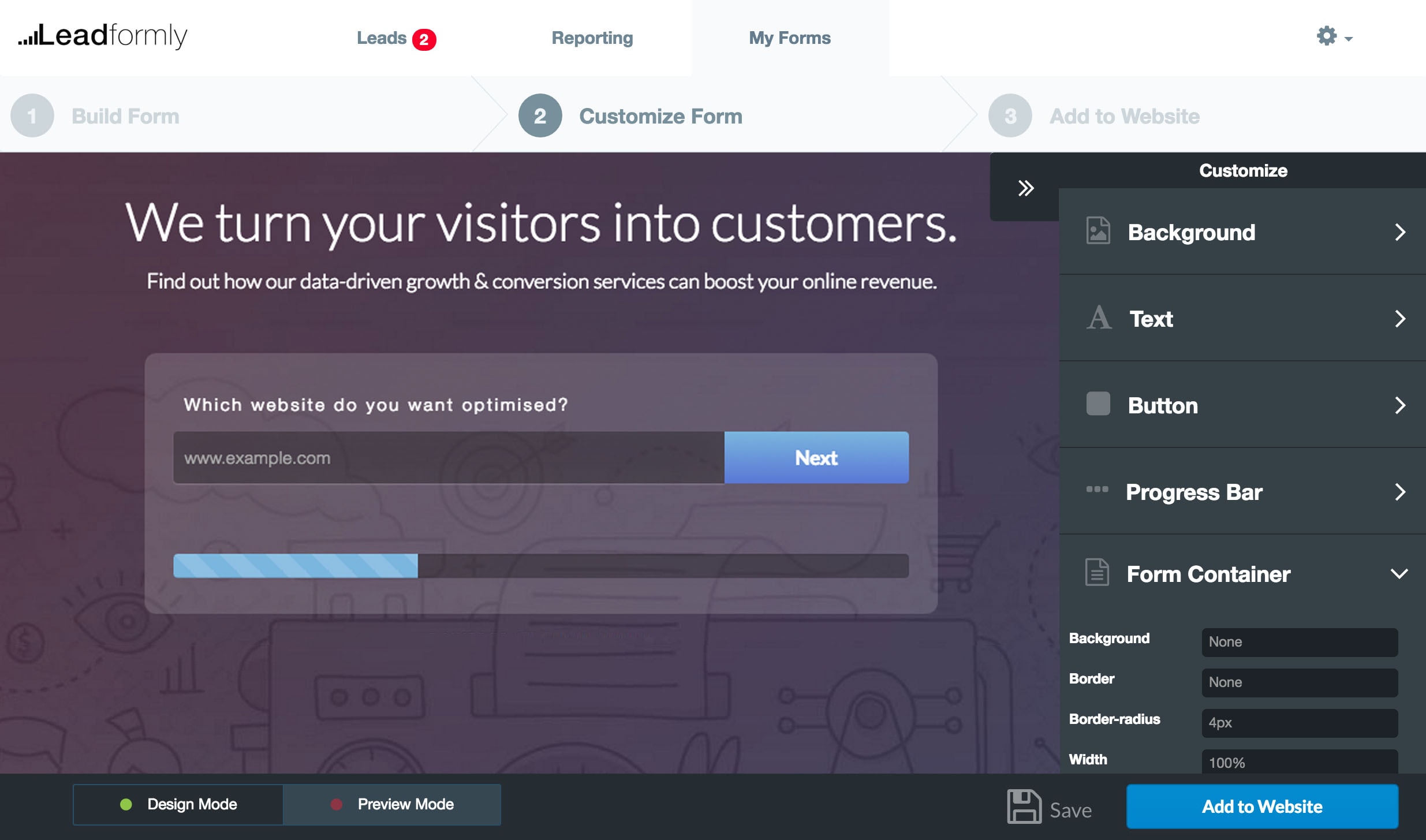
Once your funnel is well-optimised and you’re confident that there’s no more opportunity to improve your landing pages / funnels, it’s time to acquire traffic – but which channels or lead generation strategies should you use?
Email marketing strategies to generate B2B leads
Email is one of the few online marketing channels that has stood the test of time. In fact, email is 23 years old this year, and it still trumps the top spot on many B2B marketer’s lists of B2B lead generation strategies.
In this section, we’ve got some of the best email marketing strategies that’ll help you generate more B2B leads in 2020.
#1: Automate your lead gen & email marketing campaigns
One of the biggest trends in email marketing at the moment, that has generated great results for many B2B businesses, is marketing automation.
Not sure what the fuss about marketing automation is? Essentially, automation cuts out the manual workload of managing segmented lists, targeting user behaviours and a whole bunch of tasks that can turn your email marketing strategy from meh into like recovering 50% of abandoned carts or increasing sales by 5X.
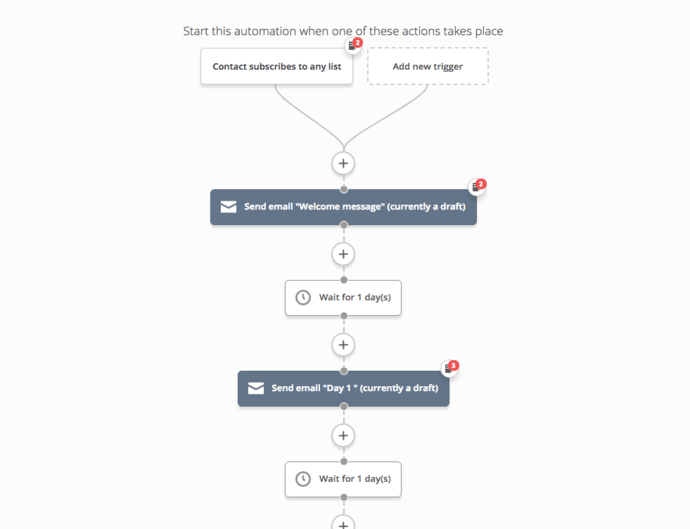
We use ActiveCampaign as our all-in-one CRM, email and marketing automation platform and we’ve been using this for well over five years now. One of the main reasons we’ve stuck with ActiveCampaign is that it offers some of the best automation features in the industry without charging the kind of prices industry leaders typically do.
#2: Build a free tool to reel leads in
One of the best lead generation strategies I’ve ever come across is using a free tool to reel users in. You’ll see this from brands like HubSpot, which offers a free CRM to get people signed up and then it will try to upsell as many leads as possible.
One of my favourite examples, though, is Crazy Egg.
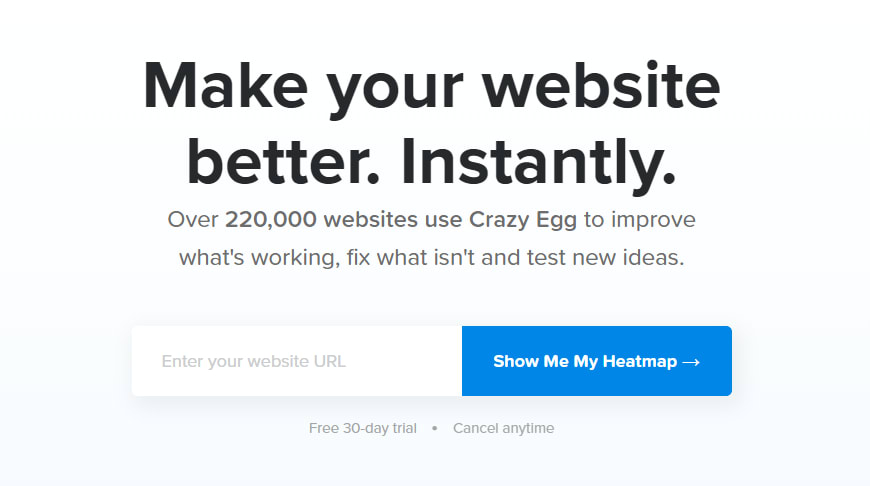
Crazy Egg doesn’t ask you to sign up for anything or buy into any of its products (at least, not now). It simply offers a free tool on its website that promises to “Make your website better. Instantly.”
That’s one compelling call to action right there. All you have to do is type in your email address and hit the button to get your heatmap, which promises better website performance instantly.
Sign me up.
I like this lead generation tactic so much that I built it into own.
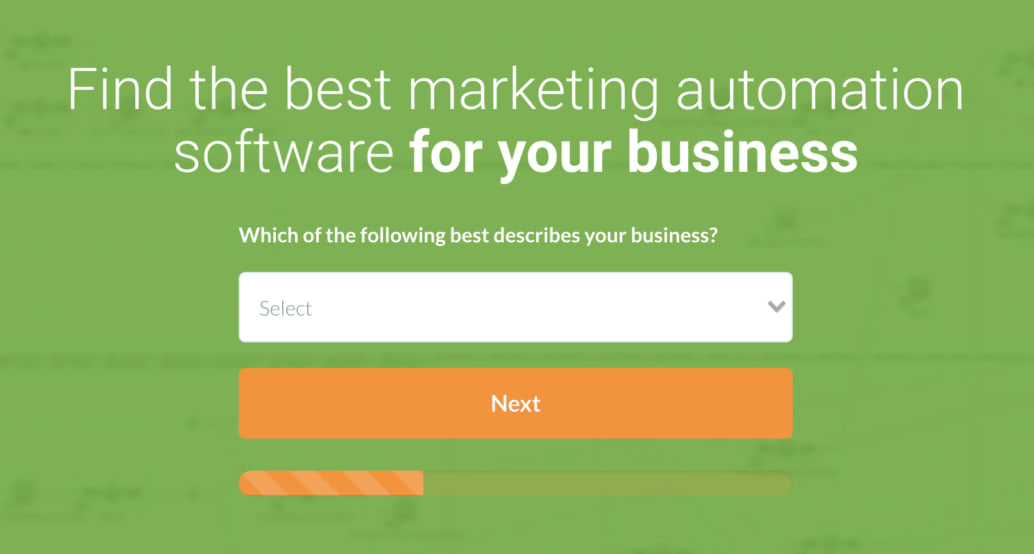
At the last stage, the form asks them for their email address where they’ll receive their personalised list of software recommendations. After filling out 90% of the form, resistance to hand over an email address is almost non-existent by this point.
The result: Major email list growth.
#3: Give something away for ‘free’
This email lead generation strategy is something of a classic but not many brands really pull it off. Today’s internet users are so used to being promised something for free that it’s lost all meaning – not to mention, most of the “freebies” are worth nothing to begin with.
Proposify understands this, which is why it offers its target audience free proposal templates, despite the fact its money comes from businesses paying for its proposal software.

Of course, these free proposals are a lead generation strategy, designed to turn free users into paying customers. And the reason this works so well is because the free templates are both genuinely free and useful.
There’s real value in these freebies.
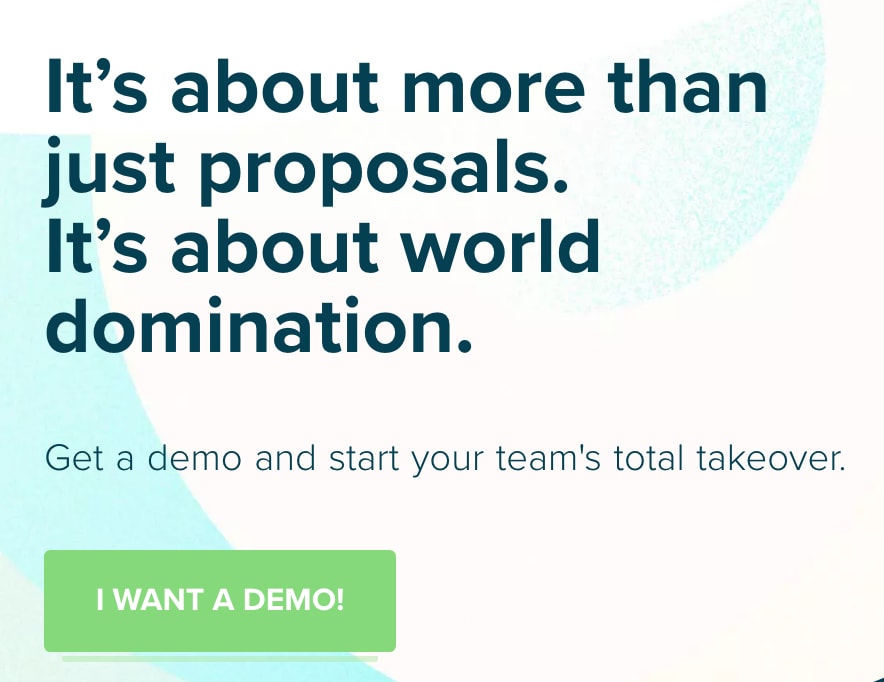
At the same time, any businesses that use Proposify’s free proposals will learn that manually editing, moving and managing proposals is a little more time-consuming than they might like.
It’s certainly more time-consuming than it would be if you were using Proposify’s software and this is where lead generation strategy communicates the value of the product and shows people exactly where they can sign up.
#4: Create referral campaigns to turn email leads into… more email leads
There’s nothing more satisfying than turning existing leads/customers into new ones – especially when you can get them to do all the hard work for you. This is where referral campaigns can work wonders, especially when you know how to automate the entire process.

With ActiveCampaign, you can set up fully automated referral campaigns using this automation workflow or create your own, based on the criteria of your choice.
The key thing here is to offer a strong enough incentive for the customer referring you to their friends or contacts. Better yet, offer a reward for both of them to double up the incentive and encourage each customer to spread the word to as many people as they can.
#5: Create re-engagement & customer retention campaigns
Bringing dead leads back to life is as good as getting new ones – if not better. As we’ve explained before, it takes less than 24 hours for most leads to turn cold so this gives you an idea of how quickly leads can lose value between successful interactions.
(I say “successful” interactions because blasting users with emails every 24 hours isn’t going to form a healthy relationship.)
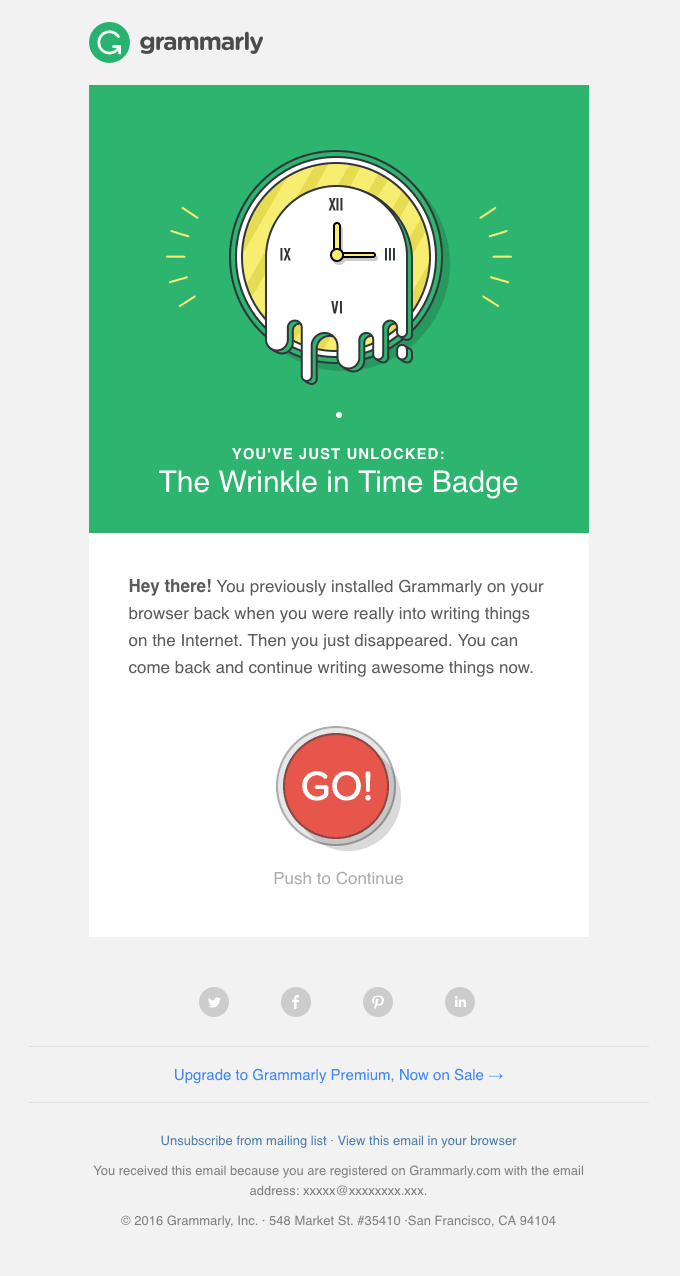
One of my favourite examples of a re-engagement email campaign is the one above from Grammarly. The campaign is aimed at people who haven’t used its software tool in a while and the company even gamifies the interaction by awarding them a badge.
Content marketing strategies to generate B2B leads
According to research from Cision, 70% of users on the internet learn via content before purchasing a product compared to traditional advertisements.
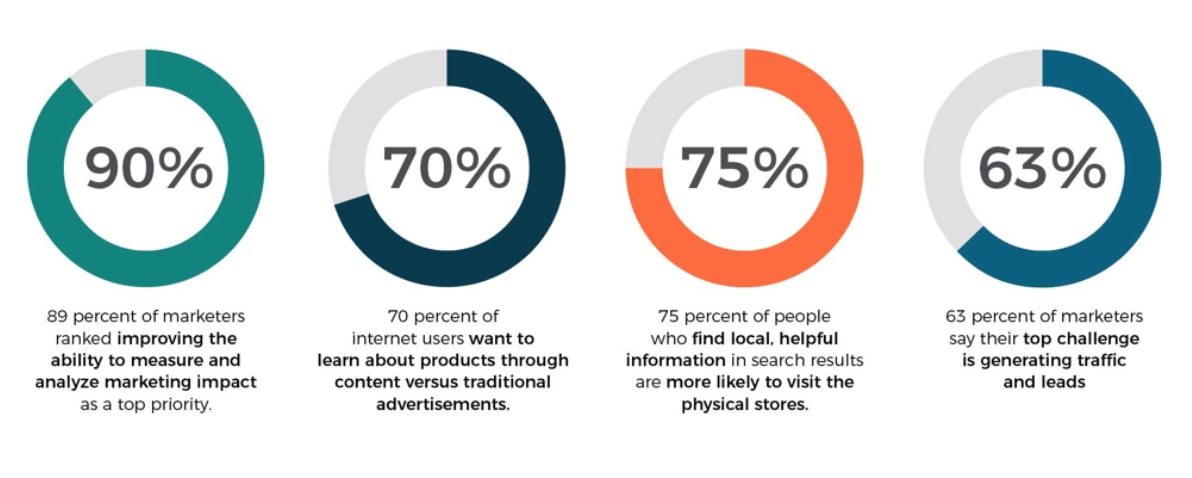
B2B decision-makers no longer rely on advertisers to inform them about products and a separate study by CSO Insights says that 70% of B2B buyers prefer self-education in the early stages of the buying process.
In other words, the people making the calls on whether to do business with you, trust themselves more than any ad or marketing message – and this needs to be reflecting in your B2B content marketing strategy.
#6: Create an automated webinar strategy
When 91% of B2B professionals say webinars are their preferred type of educational content, you need to listen to your audience. Webinars consistently top lists of the most effective B2B content formats but running a webinar strategy can require a lot of work.
Unless you automate the entire strategy, that is.

To this day, our automated webinar strategy remains one of our most effective lead generation strategies and we did 90% of the work years ago. Now, all that we need to do is keep track of performance, make the occasional tweak where needed and watch the leads roll in.
#7: Turn your blog posts into in-depth guides
This is another classic lead generation strategy but you’ll see how we kick things up a gear in strategy #8. The thing about this strategy is that you’re already investing time, effort and money into creating content for your website, blog, third-party sites, social media channels and more.
You want to make the most of that investment.
So it only makes sense to take that content, collect it in relevant groups and then turn it into much larger pieces of content. For example, all of your blog posts on business management can be combined into a comprehensive guide to business management – something business owners are going to be interested in downloading.
You know your audience is already interested in these topics because they’re generating traffic. You also know which of these topics they’re most interested in, based on the amount of traffic individual pieces of content are generating and engagement your social posts are attracting.
You can use this data to create even better content and target the same audiences on social media. All they need to do is hand over their email address and hit the download button.
#8: Add dynamic CTAs to your blog posts
Creating in-depth guides is one thing but maximising the number of downloads is something else. This strategy is designed to help you turn more blog readers into email leads and it uses the downloadable guides you created in strategy #7 to achieve this.
The reason this strategy is so important is because you want to turn as many blog readers as possible into leads rather than simply letting them go back to search or whichever social media platform they were previously using.
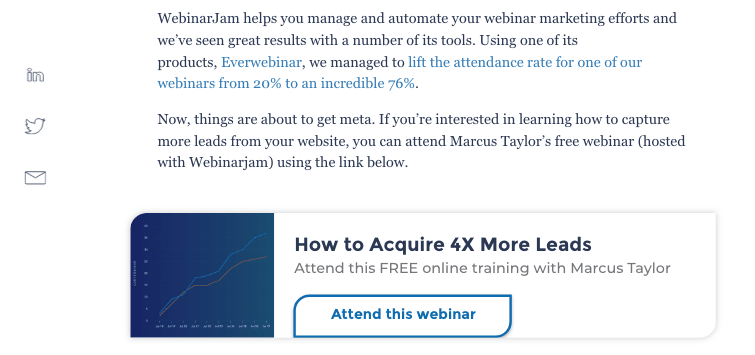
What you’re going to do now is place CTAs on your blog posts, prompting readers to download your in-depth guide on the same topic. Once again, you’re using the interest they’ve already demonstrated and creating a pathway for them to attain more detailed information.
Best of all, you can automate this so that CTAs pointing towards the relevant guide are automatically inserted in each blog post, depending on the topic/category you define before publishing.
#9: Generate email leads from video views
Video content is another area where you don’t want to let potential leads just watch your footage and then disappear again. You’ve worked hard to get your video seen by this prospect and it’s a waste to sit back and let them walk away at this point.
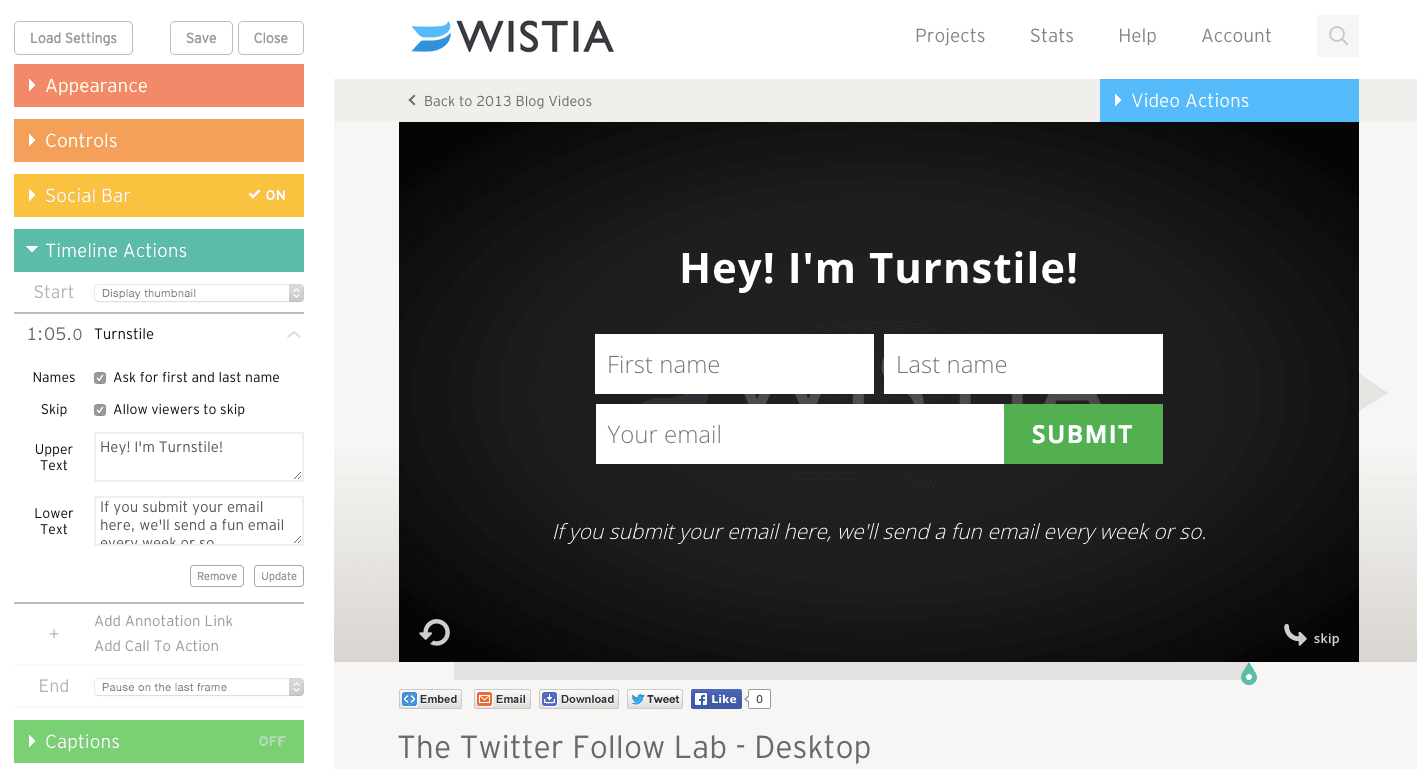
Turnstile is a great feature offered by Wistia. It allows you to place sign up CTAs on your videos to convert interested viewers into genuine leads.
You can choose when the form appears (before, during or after playback) and create custom messages to entice email sign-ups.
#10: Segment your content strategy
Segmentation is a word you’ll hear a lot in relation to email marketing but it’s just as important for content marketing. If you’re creating generic content for broad audiences, you’re unlikely to address the individual interests that inspire B2B buyers to take action, regardless of whether they’re reading a blog post, email or product description.
As content marketing agency Skyword explains:
“Your audience is full of real people – each with his or her own unique identity and life. It’s not enough to define them just by their demographics. How is someone’s income level or location going to help you understand their emotions or interests? Original audience research will help you get to a level of in-depth understanding that goes beyond demographic criteria and generalizations. Demographics are a good place to start, but your audience research strategy shouldn’t stop there.”
So, just as you would with any good email marketing strategy, create content that reaches out to the needs of your buyer personas and create segmented campaigns designed to bring them on board.
You can reach these unique audiences in search via keyword targeting and social platforms like Facebook and LinkedIn allow you to pinpoint the most relevant audience niches. The necessary tools are all there; you just need to create the content and campaigns to make the most of them.
Search marketing strategies to generate B2B leads
Speaking of search, now seems like a good time to look at some of the best search marketing strategies for generating B2B leads. I always remember managing my first big SEO campaign for a major business stationery brand back in 2010 (how time flies).
While I can’t take credit for all of the success (their in-house SEO team and previous agencies had laid a great foundation for us), I watched the site’s revenue from SEO increase by over $4 million, just from a handful of keywords reaching #1 on Google.
Admittedly, SEO is a little more tricky in 2020 than it was 10 years ago but the power of having a strong search presence on Google is as strong as ever.
#11: Pack your content with data & sharable ideas
Back in 2010, you could almost publish anything and it would rank if you got the technical SEO basics right and pointed a few links to your page. Things are very different in 2020 and you really have to earn your place in the SERPs these days.
One thing that hasn’t changed is that links remain one of the most important ranking factors, as confirmed by Google itself in 2016 and various studies since – such as this one from Backlinko (2020).
One of the most effective ways of generating the links you need to get your pages in position #1 is to pack your content full of data, stats and third-party references from trusted sources.
This makes it easy for Google’s algorithm to verify the accuracy and reliability of your content and it also makes it more link-worthy and sharable to users.

Taking this to the extreme is a concept called data journalism, where you publish data-packed content that creates an entire narrative around data insights. Such as the example above that turns Spotify data into a visualisation that rates and compares albums by progressive rock bands against the Beatles (credit: Economist.com).
Or how about this visual comparison of the heights and weights of every actor who played Batman against the comic book original (and the Lego Batman version, of course).
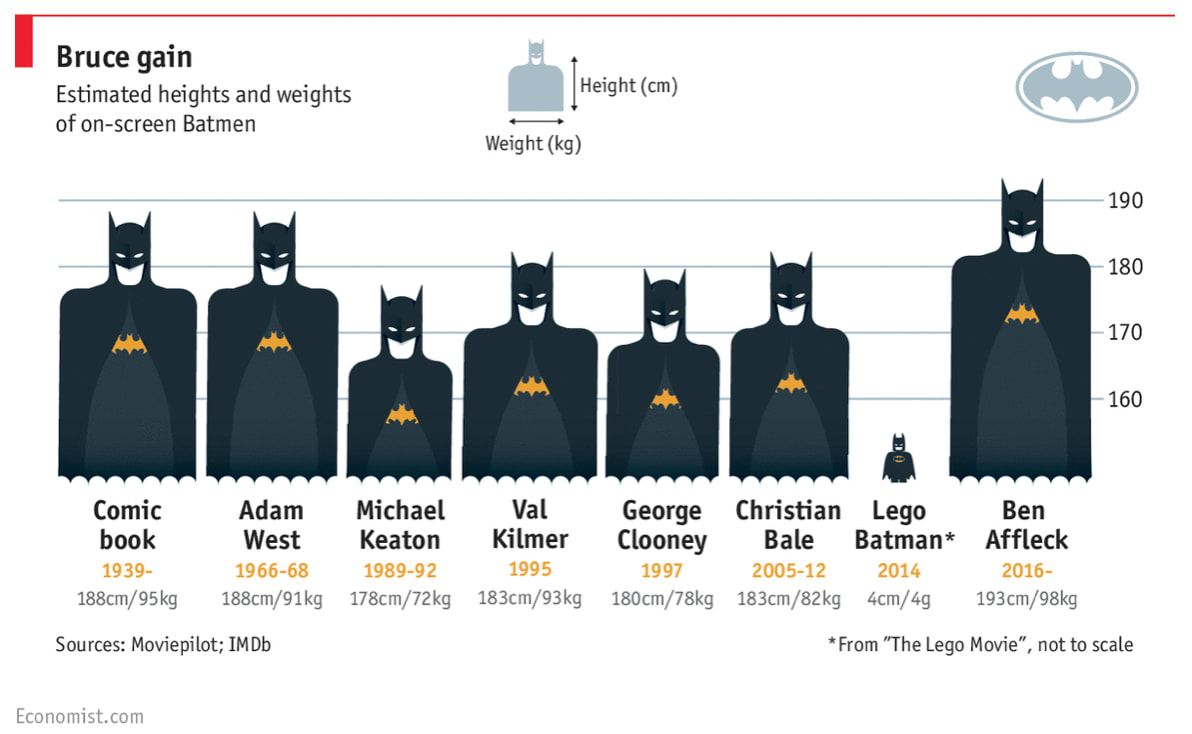
Not all data journalism needs to be visual but it does create value and meaning out of widely available datasets and it results in content that you want to share and link to, even when it’s entirely useless information about Val Kilmer’s waistline.
#12: Update your old content
One of the most important SEO strategies that businesses tend to forget about is updating old content. As Yoast explains, in this article:
“Cleaning up old content should be part of your content maintenance routine. If you don’t go through your old posts regularly, you’re bound to run into issues sooner or later. You might show incorrect information to visitors or hurt your own rankings by having too many pages about the same topic, increasing chances of keyword cannibalization, which is a lot of work to fix later on. Therefore, go through your old posts, and decide what to do: update, merge or delete.”
As it happens, this article you’re reading right now has been updated multiple times since it was first published – and it probably will be again multiple times in the future.
When content gets old, bad things can happen: broken links, inaccurate/irrelevant information, ranking drops, etc. Most importantly, though, your content isn’t going to generate leads if it’s not up-to-date and addressing the needs of your audience today.
#13: Build negative keyword lists in Google Ads
Moving away from SEO for a moment, let’s take some time to talk about paid search. For B2B advertisers, single keyword ad groups (SKAGs) used to be a reliable strategy for pinpointing highly-niche audiences.
Basically, you could define a specific keyword like “accounting software free demo” and set campaigns to only target that keyword. Or, you could go even more niche with a keyword like “best accounting software for remote freelancers” and guarantee your ad would be seen by the right audience.
Sadly, Google has killed of this capability over the years by making its keyword match types less strict. So you can no longer define a single keyword and ensure your ads are only seen by people typing that exact query into Google.
However , you can get close by choosing a single keyword, selecting the exact match keyword matching option and building a list of negative keywords around it.
While regular keywords tell Google to show your ad to users typing the same phrase, negative keywords tell Google not to show your ad to someone who types X, Y and Z.
These are crucial to targeting the right audience in Google Ads and delivering highly-relevant leads to your landing pages, making them more likely to convert into leads.
#14: Personalise your landing pages to match search intent
With your Google Ads campaigns bringing in highly relevant traffic, you can increase the likelihood of generating leads even further by personalising your landing pages to match the keywords they used to find your business.
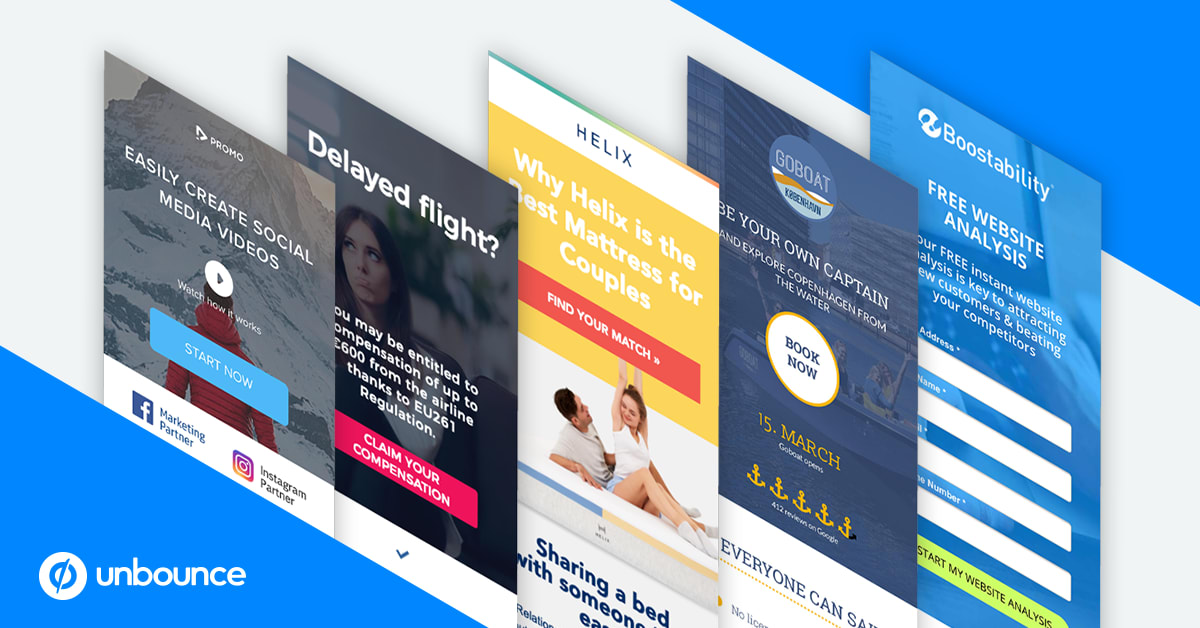
Unbounce provides a great feature for this, which is called Dynamic Text Replacement. What this does is match the content on your landing pages to the copy of your ads to ensure visitors find what they’re looking for when they land on your site.
This is especially important when Google’s keyword match types are much looser than they used to be and the actual keyword a user types in can be slightly different to the one you’re targeting.
#15: Create remarketing campaigns to keep users engaged until they convert into leads
PPC is great for bringing high-quality traffic to your website but, no matter how good your targeting and campaigns are, the majority don’t convert into leads right away.
This is why remarketing campaigns are so important because they allow you to keep visitors engaged with your brand until they’re ready to take action.
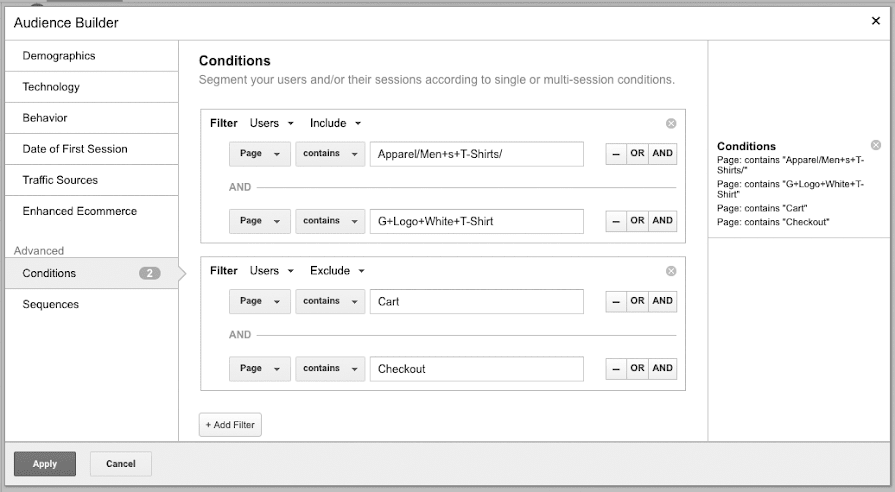
In that article, we explain the following 10 remarketing campaign strategies in detail:
- Creating remarketing lists for every stage of your sales funnel
- Creating separate remarketing landing pages
- Creating remarketing lists for your email subscribers
- Reaching new audiences with Customer Match & Lookalike Audiences
- Maximising email sign-ups with multi-step forms
- Moving B2B leads along your sales funnel with remarketing lists
- Post-purchase remarketing campaigns
- Content remarketing campaigns
- Limited offer remarketing campaigns
- Staying GDPR-compliant
Social media strategies to generate B2B leads
Social media marketing has evolved into a mature B2B leads generation channel over the years, which shows how much progress has been made since the early Facebook days. By 2017, 83% of B2B marketers were using social media as a channel, making it the most popular strategy.
Even channels associated more with B2C marketing are proving to be valuable platforms for B2B marketers with 65% saying they planned to increase Instagram activity in 2019.
#16: Use LinkedIn Advertising to target big spenders
LinkedIn ads are expensive and I’m not going to try and say otherwise. It is funny how much this puts B2B marketers off from advertising on the network, though. After all, you can make progress on LinkedIn organically and pay a fraction of the price for ads on Facebook.
This is the wrong mentality, though.
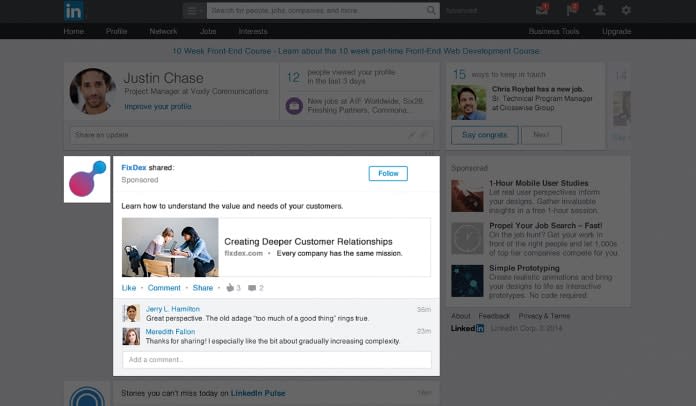
LinkedIn Advertising gives you a direct line to business decision-makers like no other network, allowing you to reach out to the individuals who make the key purchase choices. Yes, the ads are expensive. So what you want to do is target the biggest spenders so that you’re able to make big profits, even from the average 6.5% conversion rate B2B marketers typically get from LinkedIn Advertising.
#17: Promote your lead gen content on Twitter
Twitter has led a strange existence since the first tweet was published in 2016. In fact, the company no longer lists itself as a social network on the major app stores, instead choosing to call itself a news platform.
While nobody’s going to stop considering Twitter as a social network anytime soon, the category change says a lot about how people actually use the network.
Twitter is a place for people to stay up-to-date and informed about the things they care about – and this is the role B2B brands need to take on the network.
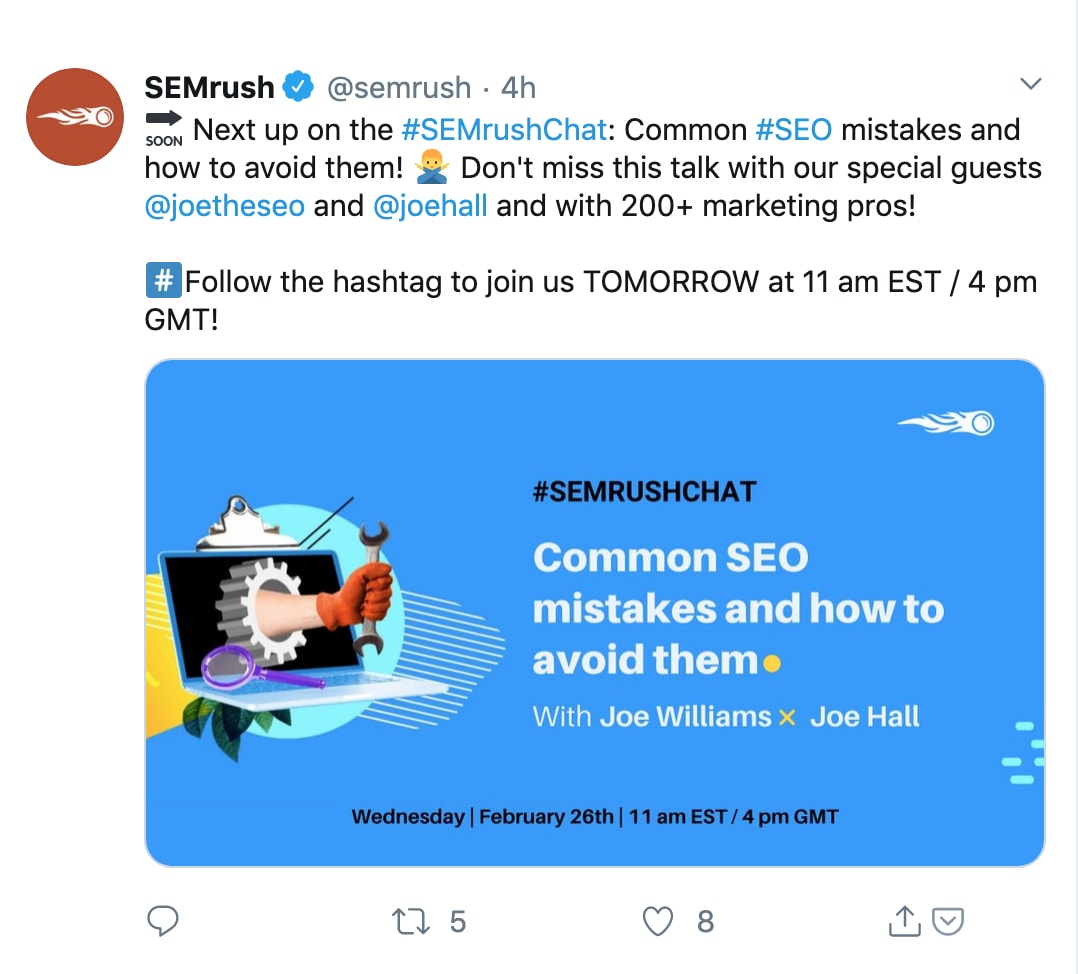
One of the best examples of B2B lead generation I’ve seen on Twitter is SEMrush and I’m not talking about a single campaign here. I’m talking about the company’s ongoing Twitter strategy that heavily engages with users, promotes third-party content and likes every positive mention about its brand.
SEMrush has created its own community within Twitter and it seems to be constantly growing, bringing more potential leads into the mix. Oh yeah, and it has good taste when it comes to picking out quality content.
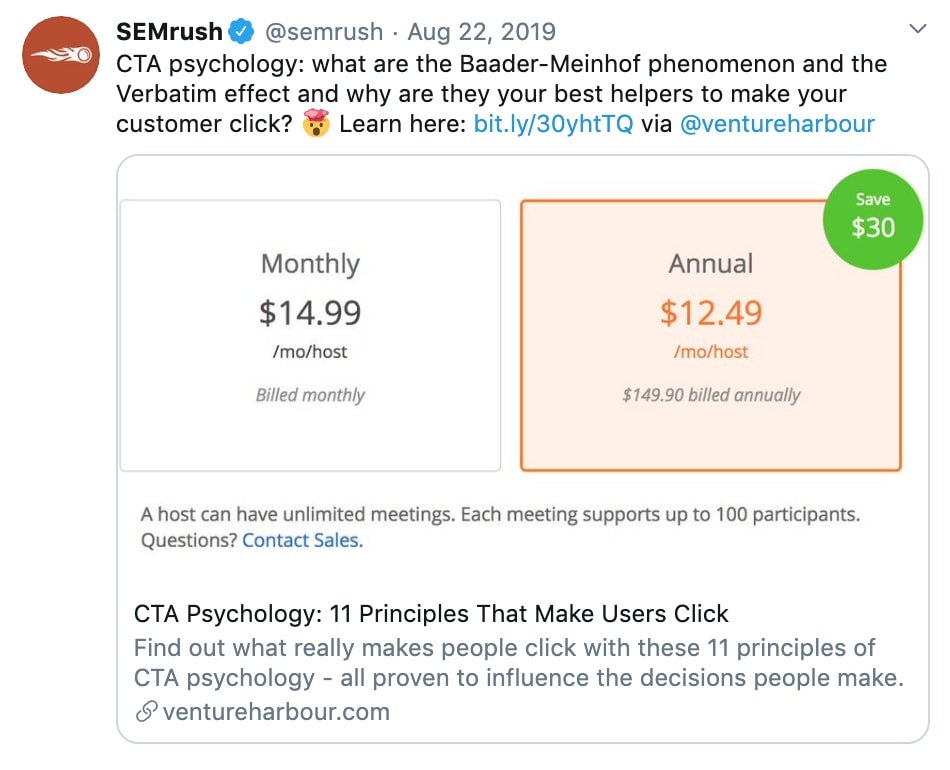
#18: Make the most of Facebook’s targeting options
We’ve written about Facebook’s powerful targeting options on our blog before and they’re still the best in the industry. This has been crucial to Facebook’s dominance in social advertising, leveraging the swathes of data users hand over every time they open the app.
It’s also played a crucial role in Facebook becoming just as effective for B2B campaigns as B2C.
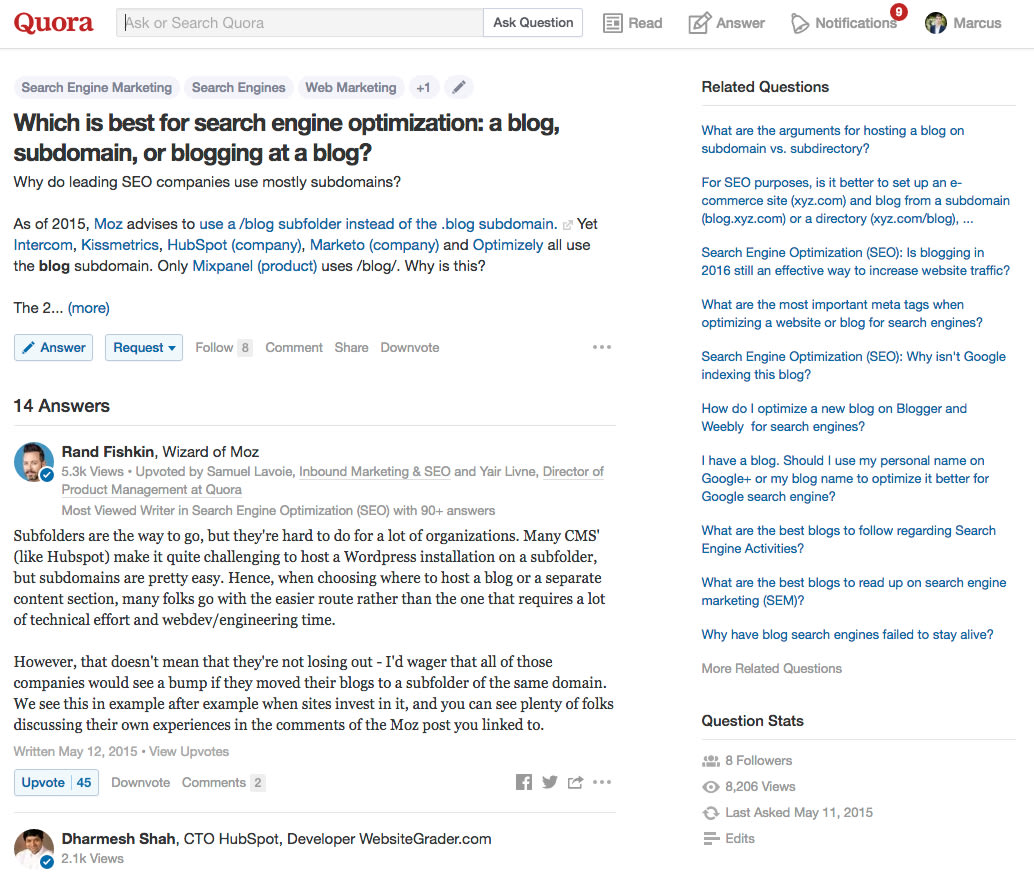
Quora works on many levels, too. You can use it as a research tool to find out what questions and needs your target audience have. You can also use it to see how your competitors respond to these questions. And you can, of course, use Quora to interact with users directly and position your brand as an authority within your field.
The one thing I recommend that you don’t do is use Quora as a place to disguise “answers” as sales pitches for every question remotely relevant to your products/services. There’s already way too much of this going on and it doesn’t make a good impression.
#19: Build your own online community
Reddit and Quora prove that the power of online communities is still strong but this shouldn’t be any secret. Some of the most successful B2B marketing strategies have emerged from creating groups on networks like LinkedIn and Facebook, which offer specific features for this.
We’ve also seen how SEMrush created its own community within Twitter even though that particular network doesn’t have dedicated functionality for creating these in the same way.

Creating a successful group on networks like LinkedIn and Facebook is more difficult than it once was, largely because so many topics have been covered and saturated. However, this doesn’t mean that you can’t establish yourself as a valuable part of existing groups/communities to build up awareness and then create your own when you have something of a following.
As long as you’ve got something fresh and valuable to offer the community, people will be drawn to what you have to say.
Conversion rate optimisation strategies
It doesn’t matter how much traffic your search and social campaigns are generating if your website isn’t converting them into leads. Likewise, your efforts to build a community on social are going to end up fruitless if nobody takes action after visiting your website.
Conversion rate optimisation is all about converting more visitors into leads and customers – crucial for any lead generation strategy.
#20: Optimise your web forms
Every conversion goal involves some kind of a form, whether it’s a product purchase, email sign-up, content download or anything else. Even after you’ve convinced someone to take action, that web form of yours is still standing between them and completing your conversion goal.
So the first place to start with your conversion optimisation efforts is your web forms.
One of the best discoveries I’ve (accidentally) made in my career is that multi-step forms convert significantly higher than traditional designs. In our early tests, multi-step forms were achieving up to 300% higher conversion rates than the original. In later tests, we’ve achieved conversion boosts as high as 743% with multi-step forms.

Along this journey of form optimisation, I learned a lot about what stops people from successfully completing forms. Above all, I learned the importance of having a form analytics tool that provides in-depth insights into how users are interacting with individual form fields.
The problem was, no such form analytics tool existed at the time.
Leadformly provides the detailed insights you need to pinpoint which form fields are causing problems so you can improve them or remove them entirely.
#21: Exit-intent pop-ups
Exit-intent pop-ups are a divisive topic that separates the UX purists from the result-driven marketers. I’m somewhere in between these two groups but definitely leaning more towards the result-driven marketer side of the spectrum and I’ve seen positive results from exit-intent pop-ups – when they’re used in the right way.
“Let’s imagine a user who’s found nothing interesting on your homepage and decided to leave. If you expect them to suddenly sign up to your newsletter because you make it unnecessarily difficult for them to leave, prepare to be disappointed.
Now, let’s imagine a different user. This one clicked through to a blog post of yours via social media, meaning they’ve shown a specific interest in a topic. And, once they’re done reading, there’s a good chance their next action will be leaving – unless you provide them with a reason to stick around. In this case, a targeted exit pop-up that offers a free download or promotion related to your article makes sense.”
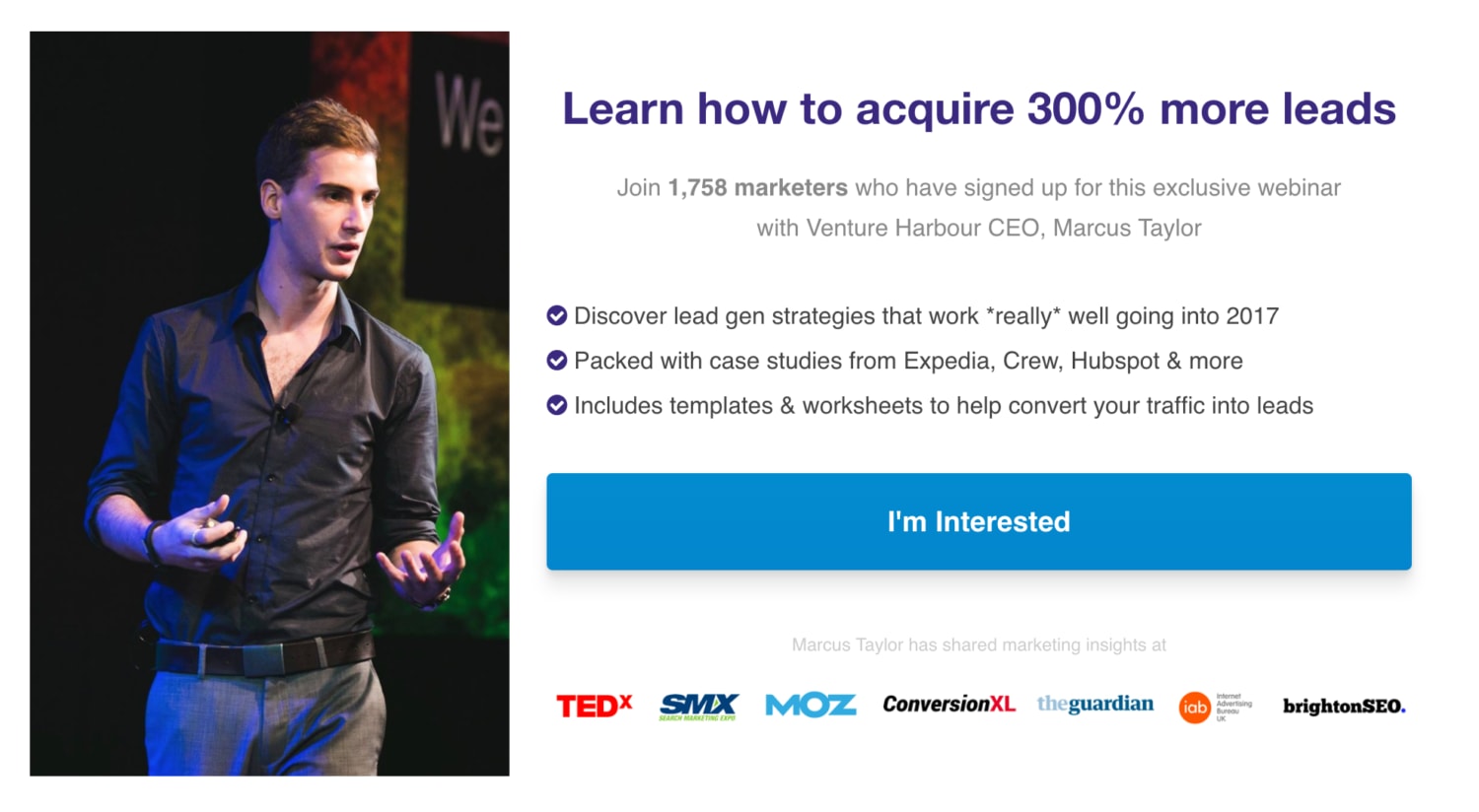
You really have to determine what message will capture users’ attention once they’ve already made the call to leave your site. What can you offer these prospects at the final moment that will change their mind and convince them to stay engaged with your brand?
#22: Use heatmaps to pinpoint conversion barriers
Heatmaps are a crucial CRO feature and we’ve seen how Crazy Egg uses them as a lead generation strategy by offering them as a free tool on its website.
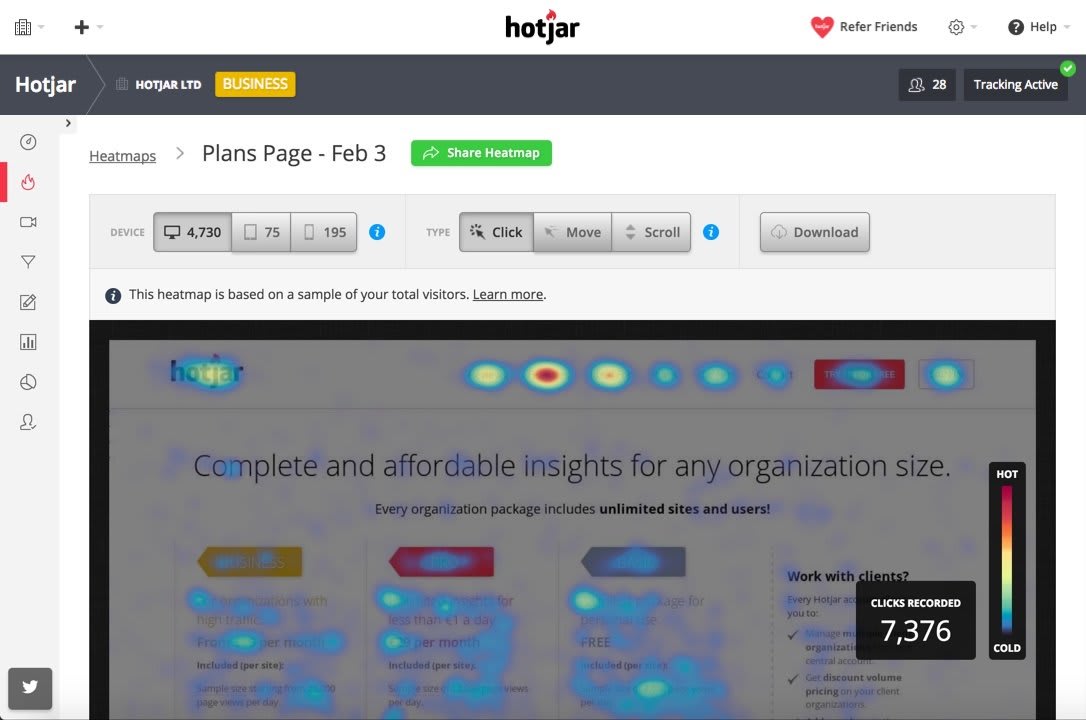
Heatmaps show you where users click, scroll, move their mouse and reveal crucial user actions that help you discover UX and conversion barriers. For example, you can see if users scroll right past your CTA when this should be the element on the page that grabs their attention most.
You can also compare the click rate of different elements to see if users are taking the desired action on your page or being distracted by something else.
#23: Test the elements that matter most
The biggest CRO mistake I see people make is they dive right into minute details like CTA button colours and font styles. This is because there are countless articles published from companies saying they increased conversion by 3 million percent after adding an exclamation mark!
It’s all nonsense, of course.
You’re not going to influence savvy business minds by choosing some “psychological” background colour (contrast is far more important than individual colour choices). You’re going to influence these people by addressing their needs as a buyer and showing that you can solve their business problems.
So start by testing different variations of your page content to determine which message is most convincing. Do the same with your CTAs – test different variations of CTA copy because this is what has by far the greatest influence.
Button colours can wait.

At the same time, you want to remove as many conversion barriers as possible. We’re talking about things like slow loading times, poor navigation, responsive design issues and other major UX problems that prevent potential leads from converting.
Then you can start looking at smaller details like CTA placement to determine where these are most effective – and this is another task where heatmaps are invaluable.
Eventually, you might get to a point* where you’re confident enough that your copy can’t be improved any more and there are no more UX issues making it difficult to convert. You may get to a point where you think your layouts are as effective as possible. And this is the point where you probably want to start thinking about changing that blue CTA button to a fancy orange.
Best Lead Generation Tools
Let’s start with the best tools for lead generation and email marketing.
On-Page Lead Generation Tools and Email Marketing
You can’t beat on-page lead generation and email marketing for online lead generation.
If visitors are already looking at your website, they’re already interested in your services or products. So, strike while they’re on your site and collect that lead!
The stats show that most people welcome emails (even cold emails if they’re done right and follow the rules) from the companies they admire.
That makes the combination of on-page lead generation and email marketing software the best lead generation duo. Here are some tools we recommend.
1. OptinMonster
OptinMonster is the best lead generation tool that makes it easy to convert your visitors into leads and customers.
It doesn’t matter what kind of website you run and what kind of leads you want. OptinMonster comes with the right solution for building campaigns to collect quality leads for your unique needs.
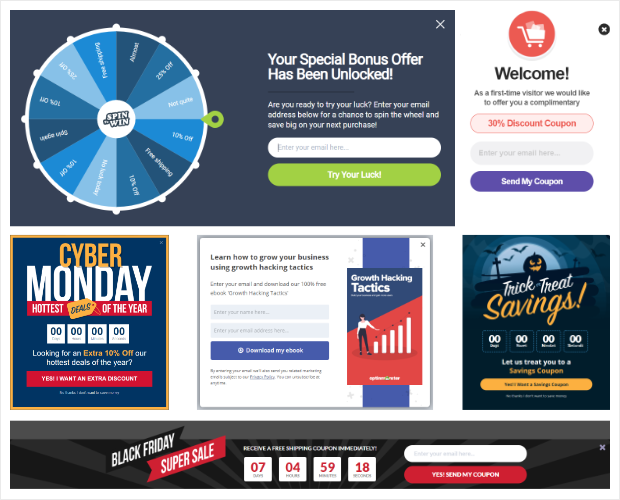
OptinMonster gives you the creative control to create eye-catching on-site lead generation campaigns like popups, slide-in windows, and gamified spin-to-win wheels. Even better? You can do it with a beginner-friendly and easy-to-use builder.
OptinMonster’s powerful personalization and targeting display rules put your campaigns in front of the right people at the right time.
In fact, OptinMonster is how AtHoc increased sales qualified leads by 141% and how SnackNation adds 1200 segmented leads every week.
Key Features:
- Reduce cart abandonment: Offer abandoning visitors a custom-tailored offer before they leave your site with Exit-Intent® Technology.
- Increase conversions and sales: Create upsell, downsell, and cross-sell offers to boost your customers’ average order value (AOV).
- Show targeted promotions: Show free shipping bars, share discount codes, promote flash sales, and more based on referral source, geo-location, previous on-site behavior, user’s device, and more.
- Targeted offers: Use what you already know about your visitors to run OnSite Retargeting® campaigns and improve conversions.
- Grow your email list: Integrate Optinmonster with your favorite email marketing, content management, and CRM platforms to automate your business.
2. TrustPulse
TrustPulse is the market’s best social proof notification plugin.
Wait, social proof? Weren’t we talking about lead generation? Yes. But without trust, you’ll never collect leads. Social proof builds that trust.
In fact, adding social proof notifications is one of the most effective lead generation marketing tactics requiring the least amount of effort. TrustPulse will show notifications of activities taken by real people on your site, like viewing or buying products, signing up for newsletters, and more.
You’ll build trust with visitors by displaying actual activity from real people.
Key Features:
- Real-time event tracking
- Smart targeting to boost conversions using advanced targeting rules and timing control
- Flexible design options to match your site’s branding
- Actionable analytics to get the stats you need to increase conversions
- Easy setup on any website with no coding needed
3. SeedProd
SeedProd is the best landing page builder on the market. Create beautiful landing pages using only a drag-and-drop builder (and no coding) in only a few minutes.
With a beginner-friendly drag-and-drop builder, you can create various pages for your site. Whether it’s for sales, maintenance, webinar, or optin campaigns, SeedProd has your back. But, with 150+ landing page templates, you don’t even need to worry about designing responsive and mobile-ready pages. All the hard work is already done for you.
SeedProd strong-arms the conversion game by integrating with many email service providers and protecting your pages from spam, bots, and other fraudulent entries.
Key Features:
- Edit content in real-time and preview your website exactly as your visitors would with its live preview
- Put your website into coming soon, 404, or maintenance mode and go live whenever you’re ready, all with one click
- Compatible with any WordPress theme and helps you ensure your website matches your branding
4. WPForms
WPForms is an easy-to-use form builder that adds simple lead generation forms to your website.
With 300+ pre-built templates, you can get the proper form on your site in just a few clicks.
While forms are limited in targeting rules as opposed to tools like OptinMonster’s popups, they’re still an excellent and reliable way to generate leads.
Key Features:
- Drag-and-drop builder to make customization easy
- Mobile-friendly forms let you collect leads from any visitor
- Instant notifications allow you quickly respond to leads
- Smart conditional logic guides you through creating high-performing forms
5. Constant Contact
If you have a more extensive contact list or prefer a MailChimp alternative, try Constant Contact. It’s a fantastic email marketing platform that will help you stay connected with your leads.
Constant Contact has an incredibly easy-to-use and lightweight interface. And as one of the largest email marketing services globally, Constant Contact can offer great deliverability rates.
Their drag-and-drop editor and email newsletter templates give your emails a polished and professional look, impressing your leads.
Key Features:
- Integrates with other lead generating tools, so you start emailing leads right away
- Marketing automation sends pre-designed emails to increase engagement and drive sales
- Easy-to-read reports track email success in real-time
- Simple contact management tools give you the power to sort, add, and manage your email contacts
6. Sendinblue
Sendinblue is a complete marketing automation platform that combines email marketing services and SMS messages. In addition, they offer a drag & drop builder that you can use to create highly-engaging emails, build automated workflows, and segment users.
Sendinblue can be your home for almost anything email marketing. From automation, segmentation, and email design tools, Sendinblue has it all.
It also offers builders for Facebook ads, landing pages, and signup forms.
Key Features:
- Customizable dashboard based on your business
- All-in-one marketing suite
- Email heat maps so you can visualize how your contacts engage with your email
- A/B testing so you can test different emails to see which resonates best with your contacts
Email Address Finders
Sometimes you need to connect with people who aren’t on your email list. That means finding their email address and contact details. This next batch of tools will help with that.
7. Hunter
If you want to do a quick email search, Hunter is a valuable tool. Just type in the domain, and it’ll find the email address pattern.
Hunter also includes a confidence rating so you know if the email is likely to be correct.
That makes Hunter one of the best email finder tools on the market.
Key Features:
- Email verifier checks the validity of any professional email address in bulk
- Browser and Google Sheets extensions
- Gmail integration to send cold email campaigns
8. AeroLeads
AeroLeads provides a Google Chrome extension to help you search various professional websites like LinkedIn for sales leads.
All you have to do is add a name and company to your AeroLeads account. The tool will then find their business email addresses and other contact details.
AeroLeads will add these leads to your email marketing lists, so you can start working on those leads right away.
Key Features:
- Chrome extension makes searching simple
- Export data to a CSV file or transfer to email marketing tools
- Verified business emails also come with job titles, company, website, location, and LinkedIn URL
9. Voila Norbert
Voila Norbert promises to help you find and verify email addresses to help you do everything from collecting leads to building business relationships.
You can search in bulk for prospects with a CSV file. The tool integrates with various CRM software to make storing and sorting email lists effortless.
It’s a solid lead generation tool.
Key Features:
- Collect verified emails to lower the amount of bounced emails
- Removes duplicate email addresses, invalid formats, and bad domains
- Provides additional details about each contact, like job roles and social media profiles
Prospecting and Outreach Tools
Want to turn more of those contacts into leads and sales? These (mostly) automated lead gen tools will help with that process.
10.D&B Hoovers
D&B Hoovers claims to have the world’s most comprehensive business database. You can use it to build targeted leads of new prospects.
Hoovers’ database includes company information to help you have more relevant conversations with those prospects. That aids you in turning more prospects into leads and sales.
This information can help guide your marketing decisions to deliver more relevant communication with your leads.
Key Features:
- Filter prospects to engage the most promising leads
- Send leads directly to your CRM tools
- Real-time trigger alerts
- Dynamic lists constantly update your contacts, so you always have valid contact information
11.Datanyze
Datanyze is another popular and easy-to-use B2B lead generation tool. With their Google Chrome extension, you can get a plethora of contact information, including email, direct dial, and mobile numbers, all without leaving your browser.
Then, you can export those to your CRM software for management and follow up.
You can use Datanyze stress-free as they promise refunds for any inaccuracies within their database.
Key Features:
- CCPA and GDPR compliant
- Target specific industries for B2B leads
- Capture contact information while you browse business websites and LinkedIn
- Icebreakers help you start meaningful conversations
12.Lead Forensics
Sometimes you can miss out on good sales leads because you don’t know everyone who visits your site.
Lead Forensics aims to solve that problem by getting contact details for anonymous website visitors. You can also use lead scoring to spend time on those most likely to convert.
You’ll also receive contact data of key contacts that match your target profile to help continue to grow your leads list.
Key Features:
- Uncovers the identity of anonymous website visitors and turns them into leads
- Provides complete contact information, including business names, identities of key decision-makers, and more
- Integrates with many of the top CRMs
13.Growbots
Know the market you want to target? Just tell Growbots, and it will choose your best prospects from a database of more than 200 million contacts separated by industry.
With Growbots, you can quickly contact the right decision-makers and follow up automatically.
Growbots also includes testing so you can check which approaches are most effective.
Key Features:
- Access to over 100 million contacts
- Only pay for the leads that fit your business
- Self-updating database
- Email marketing capabilities, including automation
CRM Tools
You can’t do a roundup of lead generation software without including tools for customer relationship management (CRM). These tools help you connect and keep track of prospects and sales leads throughout the sales pipeline. Here are our picks.
14.Overloop
Overloop is a CRM with a special focus on email address prospecting, conversations, pipelines, and workflows.
A drag and drop dashboard helps you see all of your pipelines at a glance, giving you an excellent business overview.
Overloop’s automation is also built on a visual dashboard, so you can put your sales prospecting on autopilot. Best of all, it integrates with various services to automatically get contact information.
Key Features:
- Find email addresses either individually or in bulk
- Turn these emails into cold emails, all in the same tool
- Track email campaigns with in-depth data
- Automated workflows reduce repetitive tasks
15.HubSpot
HubSpot is one of the world’s top CRMs available. While they offer a wide variety of tools, one of the top uses of HubSpot is its email marketing services.
With HubSpot, you can create stunning conversion-ready emails while learning valuable insights and reports into how youremails perform with your customers.
HubSpot can be one of your best assets when it comes to sales and marketing.
Key Features:
- Easy-to-use platform
- Separate hubs let your focus on the areas your business needs, all in one tool
- Live chat functionality
- Email template, scheduling, tracking, and engagement tools
16.Pardot
Pardot is a well-known lead generation tool that helps you manage and qualify sales leads. By qualifying leads, you can rest assured that you’re always talking to the best leads.
Pardot includes fine-grained segmentation and marketing automation for better communication with your future customers.
There are also tools within Pardot to help you with landing page design, embedding forms, and email management.
Key Features:
- Lead nurturing and qualification tools help you find the best potential customers
- Detailed data that lets you customize the user experience
- Separate tools based on industry
17.SharpSpring
In addition to its built-in CRM, SharpSpring integrates with all the top CRM lead management tools. That allows you to manage lead data across multiple platforms.
SharpSpring includes custom deal stages, a helpful pipeline overview, and other marketing strategy tools.
Key Features:
- Marketing and email automation all in one tool
- Integration with many of the top marketing apps and tools
- Detailed analytics on every interaction with your leads
18.Keap
Keap helps you keep your customers’ information and conversations neatly organized, all in one place.
From lead capture to emails to invoicing, Keap makes essential business tasks easier to handle.
Like other CRMs, Keap also has automation tools to help you streamline marketing and lead generation efforts.
Key Features:
- Desktop and mobile apps so you can stay connected on the go
- Marketing automation to nurture your leads
- Migration tools to make importing your data from email providers fast and straightforward
19.Adobe Marketo Engage
Adobe Marketo Engage uses behavior tracking to help you identify prime customers for engagement.
With a cross-channel engagement feature, you can coordinate 1 to 1 communication with your leads across online and offline platforms.
Plus, Adobe Marketo Engage personalizes the user experience on your site, even for anonymous users. This helps you attract more leads and improve the quality of sales leads.
Key Features:
- Marketing Automation rules to engage and attract more leads
- Revenue tracking to track different marketing channels impact your bottom line
- Works across different teams so other departments can help foster and grow your leads and sales
20.Nimble
Nimble focuses on the relationship side of your business. Plus, it works in your Outlook, Gmail inboxes, and many other websites.
This tool pulls information from many online sources, so you always have the latest data on potential leads.
Nimble makes it easy to identify and nurture key contacts without data entry.
Key Features:
- Take bulk actions across multiple leads to save you time
- Bring all of your contacts and leads from across your company into one easy-to-use platform
- List segmentation to organize contacts
21.OnePageCRM
Looking for another simple piece of lead generation software? OnePageCRM grabs leads from Gmail, social media sites, and business networking sites to integrate them into your CRM.
This software focuses on “next action sales,” so making sales is as simple as checking off your to-do list.
OnePageCRM is a super simple and efficient CRM, so you only focus on the actions that drive leads and sales.
Key Features:
- Email management features, so you keep everything in one place
- Lead Clipper feature grabs lead from any website with one click
- Drag-and-drop sales pipeline management
- Integrates with a variety of programs like Google, Chrome, Zapier, Dropbox, and more
Sales Lead Generation Tools
For businesses, the goal of using lead generation tools is turning those leads into sales. And since the best source of repeat business is existing customers, it makes sense to use tools that both make sales and nurture your customers. Here are some B2B lead generation tools to help with sales lead generation.
22.Salesforce
Salesforce is among the world’s top sales and lead management software focusing on the work smarter, not harder mantra.
With tools to help you manage sales leads, customers, sales teams, and more, Salesforce is one of the top sales lead generation tools.
Plus, it integrates with a wide range of sales and marketing software to help businesses sell more and deliver better customer service.
Key Features:
- Separate tools specific to your industry to give you an edge over your competition
- Support functions like a customized help center, chatbots, and field service tracking
- Guided setup to get you on the platform in minutes
- Multi-device support so you can work your business on the go
23.HubSpot Sales
While we already discussed HubSpot earlier in this post, we need to highlight their Sales Hub in particular.
Sales is part of HubSpot’s suite of tools for small businesses. It helps you save time generating new sales leads with a sales CRM, engagement tools, quote functionality, and more.
HubSpot Sales includes tools and templates for email outreach and follow-up to interact more efficiently with prospective customers.
Key Features:
- Integration with over 940 tools in the HubSpot App Marketplace
- Meeting scheduler keeps your calendar organized
- Live chat to connect with your leads easily
- Free plan to get you started
24.LinkedIn Sales Navigator
To the surprise of no one, the professional networking site LinkedIn has vast amounts of company information in its databases. You can gain access to that info via LinkedIn Sales Navigator.
This lead generation and sales tool gives you the necessary knowledge to reach and engage the right people.
LinkedIn Sales Navigator provides advanced lead searches, recommendations, CRM integrations, and sales updates.
Key Features:
- LinkedIn InMail Messages access
- Access to LinkedIn subscription features like Job Seeker and LinkedIn Learning access
- Customized lead suggestions
- Integrate with other sales tools
25. Pipedrive
Pipedrive prides itself on simplicity, and it’s easy to use.
This automatic B2B lead generation software tracks all interactions with leads quickly. Then you can see all the data in one unified dashboard whenever you check in.
It also makes it easy to know what action to take next.
Key Features:
- Design sales pipelines from scratch or by using one of Pipedrive’s templates
- Coaching to help you meet your sales targets and goals
- Security dashboard so you can monitor how, when, where, and by whom your company data is being accessed
- Integrates with over 250 other tools
Communication Tools
It’s a bit of a cliche, but it rings true, especially in business: Communication is key. Simply talking to people who land on your site can help you win them as customers.
Of course, that applies to sales leads, too. This next batch of lead generation software tools will help with communication.
First, let’s look at a few live chat tools.
26.Drift
Drift helps you deliver helpful and personal service to customers by conversing with them.
This tool runs off the cornerstones of “Conversational Marketing” and “Conversational Sales.”
Drift allows you to talk with your website visitors instead of just asking them to fill out forms and wait for follow-ups.
Key Features:
- Integration with other sales and marketing platforms that personalize each person’s experience based on their history with your business
- Chatbot to qualify and guide your leads
- Eliminate back-and-forth communication with leads and connect with them in real time on your website
27.Intercom
Need a modern messaging service to engage site visitors fully? Intercom could be the answer.
A messenger app connects you with your customers to give them higher satisfaction and loyalty to your business.
Bots, live chat, and other communication-based apps within Intercom can help your leads and customers whenever they need.
Key Features:
- Self-service chat and help features to free up your time without sacrificing customer service
- Connects with 300+ other tools so you can talk with confidence
- Collects information from customers so you can follow up later
28.CallPage
CallPage generates more phone call-based leads for your business.
With the help of a button on your site, potential leads will enter their phone number. Then, within 28 seconds, they’ll receive an automatic callback, no matter where they’re located. Of course, you can set business hours only to receive calls.
With lead qualification and sales, speed is key to communication. CallPage helps you bridge that gap.
Key Features:
- Targeting rules, so the callback button only appears when leads are the hottest
- Fully customizable popups
- Call analytics dashboard to give you insight into your calls
Advertising Tools
A lead generation platform is vital if you intend to convert your website traffic into leads. However, you’ll first need traffic.
There are two common ways business drive traffic to their websites:
- Organic: You can drive free organic traffic by optimizing your website for SEO. The only downside is that it can take a long time.
- Paid ads: Paid ads can be the more expensive, but it allows you to generate traffic instantly and test your lead-generation funnel right away.
This section shares three paid advertising tools to help you generate high-quality, targeted leads.
29.Google Ads
Google Ads puts ads in front of people searching for related terms.
That way, your ads are relevant and will increase people’s chances to visit your website or call your business.
One great feature is that setting up campaigns is free. You only pay for advertising when people click your ad.
Key Features:
- Customizable copy based on your advertising and marketing goals
- Reach a broad audience of relevant potential leads
- Select where your ad appears so you only reach your target audience
30.AdRoll
AdRoll puts your business in front of the eyes of potential leads as they browse the web, use social media, and look at their inboxes.
This lead generation tool combines the power of display ads, social ads, and email to promote your business effectively. It includes automation and rich insights so you can tweak campaigns for more growth.
Key Features:
- Audience targeting rules make sure your ads are being placed in front of the best quality leads for your business
- Compliant with worldwide privacy requirements
- Insights on your campaigns so you can tweak them if needed
31.AdEspresso
AdEspresso is an optimization tool for Facebook, Instagram, and Google ads.
With this lead generation advertising tool, you can create and test multiple ad variants with only a few clicks.
You can also run ads with various audiences and measure what’s most effective with in-depth analytics.
Key Features:
- Create and manage all your ads with one dashboard
- Optimize your campaigns using daily in-app tips
- AdEspresso University offers courses and live webinars to learn more about marketing and campaigns
Other Lead Generation Software
Finally, let’s complete our roundup with a few other lead gen tools.
32.RafflePress
RafflePress is not your typical lead generation tool; it’s a viral giveaway plugin for WordPress.
So, why is it here?
Online contests and giveaways are some of the quickest and easiest ways to increase traffic to your website, grow your email list, and boost engagement. It sure sounds like a fantastic lead generation tool to us!
Key Features:
- Create different entry options for all major social networks
- Drag-and-drop giveaway builder
- Marketing and CRM integrations
- Success tracking and retargeting
- Fraud protection
33.Extole
Word of mouth is a powerful lead generation tool, and humans love to share what they love.
Extole harnesses that by turning your best customers into loyal advocates.
When your advocates share your business, your site will see more traffic that converts. Plus, since their friends referred them, these new customers will likely be just as loyal.
Key Features:
- Complete creative control over all content you create with this tool
- If you have a physical location, you can use the platform with their site-to-store capabilities
- Launch a rewards campaign to award your strongest advocates
34.ReferralCandy
ReferralCandy helps eCommerce stores generate leads and sales by offering customers discounts for referring new businesses.
You can easily customize a referral program for your business and collect data on how well the program is working.
ReferralCandy also integrates with other marketing tools to track referral traffic, retarget leads, and send newsletters.
Key Features:
- Fraud detection to protect your program and increase your ROI
- Automated rewards payouts
- Customizable rewards options
35.Zapier
If you’re wondering what Zapier‘s doing on a list of lead generation software, the answer’s simple. Zapier’s here because it lets you connect multiple business services, including some lead generation software, in our roundup.
In fact, they have an OptinMonster lead trigger that makes it super easy to connect OptinMonster, the #1 conversion software in the world, with the other business services you use.
Key Features:
- Connect different software and tools to automate your workflow
- Simple connections make automating your workflow easy
- Works with over 3,000 apps
- Pre-made templates make connecting tasks a breeze
The Serial Seller Close
Lead Generation is a beast of a thing and as you can see in this post above, it take a lot of little changes to be perfect.
You can get started with some simple campaigns and we outline that for our clients here at The Serial Seller.
If you want help with lead generation for your business, Book a Call with Us Now!
About us and this blog
We are a Full-Service Sales & Marketing provider that aims to help small to medium businesses increase their leads and sales while helping remove the business owners from their day-to-day activities so they can focus more on the long-term goals of their business.
Book a Meeting with us!
We offer Done-For-You Sales, Sales Coaching, and Advisory as well as Digital Marketing Services. If you want to increase the leads generated for your business and need some guidance and accountability, book a call with us now.
Subscribe to our newsletter!
More from our blog
See all postsRecent Posts
- How Do You Stop Google Ads May 9, 2025
- How to Make Money Off Social Media May 5, 2025
- How to Duplicate Page WordPress May 1, 2025

